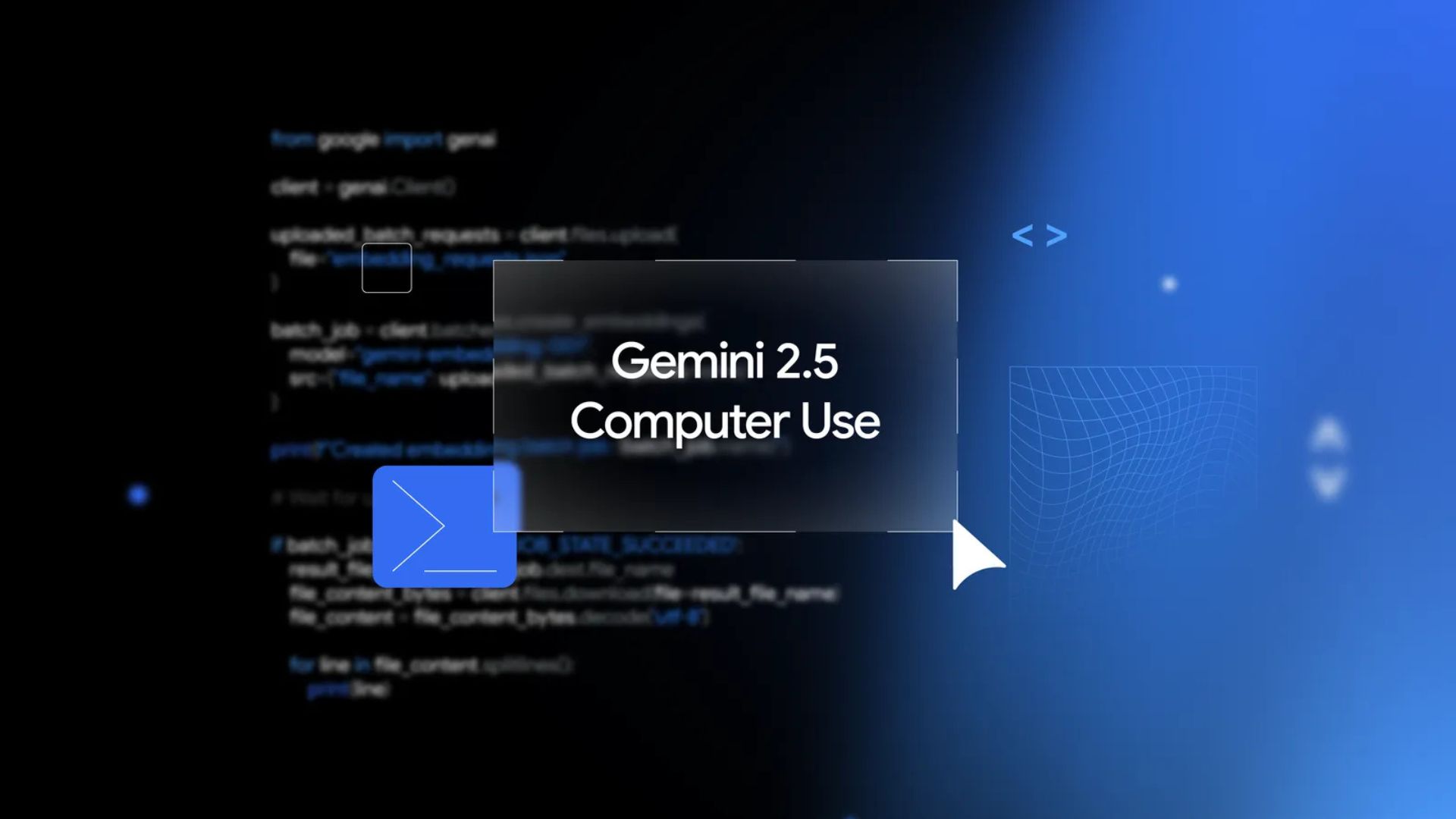- Simplifying AI
- Posts
- 🤖 AI Weekly Recap (Week 41)
🤖 AI Weekly Recap (Week 41)
This week’s top AI news, breakthroughs, and game-changing updates

Good morning, AI enthusiast. AI just had another wild week. OpenAI launched Apps inside ChatGPT, letting users use tools like Spotify, Canva, and Figma directly within chat, while Google unveiled Gemini 2.5 Computer Use, an AI that can literally browse the web like a human, clicking, typing, and completing real-world tasks inside a browser.
Plus: The most important news and breakthroughs in AI this week.


OpenAI introduced third-party apps directly inside ChatGPT, letting users interact with tools like Spotify, Figma, Coursera, Canva, and Zillow, all within a single chat. Developers can now build these apps using the new Apps SDK, unveiled at DevDay 2025.
→ Powered by the Model Context Protocol (MCP) for seamless data and action integration
→ Apps render interactive UIs, videos, and maps inside chat
→ ChatGPT now suggests relevant apps automatically during conversations
🧰 Who is This Useful For:
Developers building AI-native applications
Businesses integrating services into ChatGPT
Users wanting all-in-one productivity inside chat
Product teams experimenting with AI app distribution
Try it now → https://chatgpt.com/


DeepMind has launched CodeMender, an AI-driven system that automatically detects, fixes, and verifies software vulnerabilities, marking a major step toward autonomous cybersecurity.
→ Combines reasoning models with static & dynamic analysis, fuzzing, and symbolic solvers
→ Has already contributed 72 verified fixes to large open-source projects
→ Ensures each patch passes automated validation before human review
→ Supports proactive hardening, e.g., securing the libwebp library against buffer overflows
🧰 Who is This Useful For:
Developers maintaining large or legacy codebases
Security teams seeking faster, verified patching
Open-source maintainers aiming to prevent vulnerabilities


OpenAI unveiled AgentKit, a full-stack toolkit for building, deploying, and optimizing AI agents, announced by Sam Altman at Dev Day 2025. The suite aims to make agent creation as simple as app design.
→ Agent Builder: Visual, no-code tool (“Canva for agents”) to design logic and workflows
→ ChatKit: Embeddable chat UI for integrating agents into any app
→ Evals for Agents: Tools for performance testing, trace grading, and prompt optimization
→ Connector Registry: Secure integration with internal tools & third-party systems
🧰 Who is This Useful For:
Developers prototyping and scaling autonomous AI agents
Enterprises deploying internal AI automation
Startups integrating chat or workflow agents into their products
Try it now → https://platform.openai.com/agent-builder


ElevenLabs launched Agent Workflows, a visual editor that lets developers design complex, auditable conversation flows using specialized Subagents, each with its own prompt, tools, and knowledge base.
→ Enables structured conversation routing with scoped credentials and business logic
→ Subagents handle specific tasks and hand off to humans when needed
→ Optimizes cost, latency, and accuracy by using the best LLM for each step
🧰 Who is This Useful For:
Enterprises building multi-step AI workflows
Developers needing precise agent control
Customer support teams automating conversations
Companies requiring compliance and auditable routing
Try it now → https://elevenlabs.io/app/agents


Google just unveiled Gemini 2.5 Computer Use, a model that can click, scroll, and type in a real web browser, just like a human. Instead of relying on APIs, it visually understands websites to complete complex tasks inside regular browser interfaces.
→ Can fill out forms, add items to your cart, or play games like 2048, all through a browser
→ Uses visual reasoning to interpret on-screen elements and perform 13 supported actions (click, drag, drop, type, etc.)
→ Available to developers via Google AI Studio, Vertex AI, and a live demo on Browserbase
→ Competes directly with OpenAI’s new ChatGPT Agents and Anthropic’s “computer use” features
🧰 Who is This Useful For:
Developers creating autonomous web agents
Teams automating browser-based workflows
Researchers testing AI in real-world web tasks
Product teams building hands-on AI assistants
Try it Now → https://gemini.google.com/app


Pika Labs introduced Predictive Video, turning short prompts into 10-second 1080p videos automatically. The update adds Pikaframes keyframe transitions for cinematic, smooth animations.
→ Generates videos from short prompts, including script, soundtrack, and lighting
→ Uses Pikaframes for seamless keyframe transitions
→ Ideal for fast social video creation without lengthy instructions
🧰 Who is This Useful For:
Content creators producing quick social videos
Marketers needing short-form promotional clips
Designers experimenting with AI-driven animations
Social media managers testing creative ideas fast
Try it Now → https://pika.me/


Elon Musk released Grok Imagine v0.9, an AI platform for instant text, image, and video generation. The update emphasizes speed, realism, and a voice-first interface.
→ Ultra-fast generation: Videos in under 15 seconds, images and text appear almost instantly
→ Voice-first mode: Start generating content without typing
→ High realism: 8K cinematic visuals with accurate textures, reflections, and lighting
🧰 Who is This Useful For:
Content creators needing ultra-fast AI video generation
Designers and animators testing futuristic or cinematic visual
Marketers producing high-quality promotional content
Tech enthusiasts exploring advanced AI media tools
Try it Now → https://grok.com/imagine


Samsung unveiled TRM, a 7M-parameter model that outperforms much larger LLMs like DeepSeek-R1 and Gemini 2.5 Pro on reasoning tasks, relying on recursive self-refinement rather than scale.
→ Draft + refine: Generates initial answers and iteratively improves them
→ Latent scratchpad: Internal reasoning and self-critique for accuracy
→ Multi-cycle revisions: Up to 16 refinement cycles for logical consistency
→ Highly efficient: Achieves state-of-the-art reasoning on minimal compute
🧰 Who is this useful for:
Researchers seeking advanced reasoning without massive hardware
Startups deploying specialized AI on limited infrastructure
Developers building lightweight AI assistants or analytic tools
Enterprises optimizing AI cost-efficiency and performance
Learn More → https://www.alphaxiv.org/pdf/2510.04871

That's it! See you tomorrow
- Dr. Alvaro Cintas
